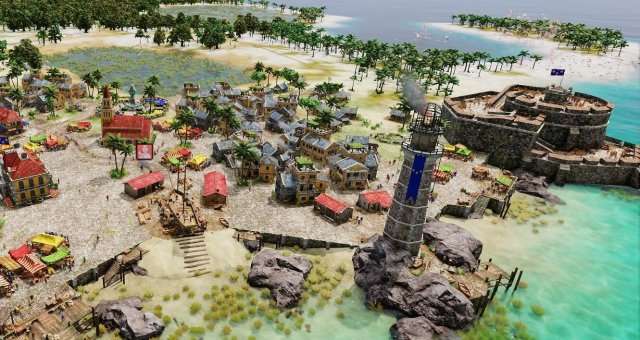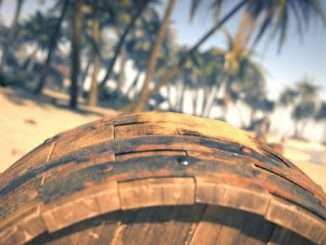
Port Royale 4 Production Costs at 100% using balanced price for materials.
Guide to Materials Costs
All credit goes to TheCollector!
Introduction
The following guide lists the production costs for 100% efficiency and uses the balanced price (2 green bars) for raw materials when manufacturing refined goods.
Business in PR4 comes with 20, 40 or 60 workers depending on business type. The daily worker costs are 240, 480 or 720 respectively. Number of workers (-> worker costs), raw material costs and number of produced items per day can be found in the trade and building menu in the game and determine the production costs per item.
Example: Grain
- Grain: 480 / 12 = 40 (43)
A farm with 40 workers cost 480 per day and produce 12 Grain (100%) per day. The average production costs for Grain is 40, the balanced price when the market has 2 green bars is 43.
Note: If using 4 farms on 110% cropland production costs will be lower.
In general the 100% production costs are below the balanced price, allowing the player to supply the local market with goods and make a small profit while AI and player trade routes can pick up the goods from the market and sell them to other cities for another profit.
In case of Grain (100%) the profit is 12 x (43-40) = 36 per farm per day.
Note: Building more farms in groups of 4 increases production efficiency and so lowers production costs with the risk of oversupplying the local market which may lead to a price drop from 43 to 30 (75% of the 100% production cost.
Note: Luxuries are an exception since for some of them the 100% production costs are above the balanced price. See below.
Basic Goods
- Grain: 480 / 12 = 40 (43)
- Fruits: 480 / 8 = 60 (64)
- Wood: 480 / 12 = 40 (43)
- Corn: 480 / 10 = 48 (51)
- Vegetables: 480 / 8 = 60 (64)
- Sugar: 480 / 8 = 60 (64)
- Beer: (480 + 3×43) / 6 = 101.5 (108)
- Bricks: 240 / 12 = 20 (21)
Demanded Goods
- Hemp: 480 / 8 = 60 (64)
- Ropes: (480 + 4×64) / 4 = 184 (194)
- Rum: (240 + 2×64 + 2×43) / 4 = 113.5 (118)
- Meat: (480 + 4×51) / 4 = 171 (181)
- Metal: 480 / 8 = 60 (64)
- Coal: 480 / 8 = 60 (64)
Export & Craft
- Cotton: 720 / 12 = 60 (64)
- Cloth: (480 + 6×64) / 6 = 144 (151)
- Tobacco: 480 / 6 = 80 (86)
- Coffee: 720 / 6 = 120 (129)
- Cacao: 720 / 6 = 120 (129)
- Metalware: (480 + 6×64 + 3×64) / 6 = 176 (183)
Luxury Goods
- Clothing: (480 + 2×151) / 2 = 391 (324)
- Ceramics: (240 + 4×21 + 2×64) / 4 = 113 (118)
- Pastry: (480 + 2×43 + 64) / 2 = 315 (334)
- Furniture: (480 + 2×43 + 183) / 2 = 374.5 (351)
- Luxury Items: (480 + 2×118 + 183) / 2 = 449.5 (361)
Notes
Luxuries are different in the way that Clothing, Furniture and Luxury Items cost more to produce than the balanced price. You can still make a profit but only if there is a local shortage and the market is empty and so local prices are significantly higher.
So in the early game it is more profitable to let AI produce these goods, deliver the raw materials and buy the finished product from the local market for the balanced price.




Be the first to comment